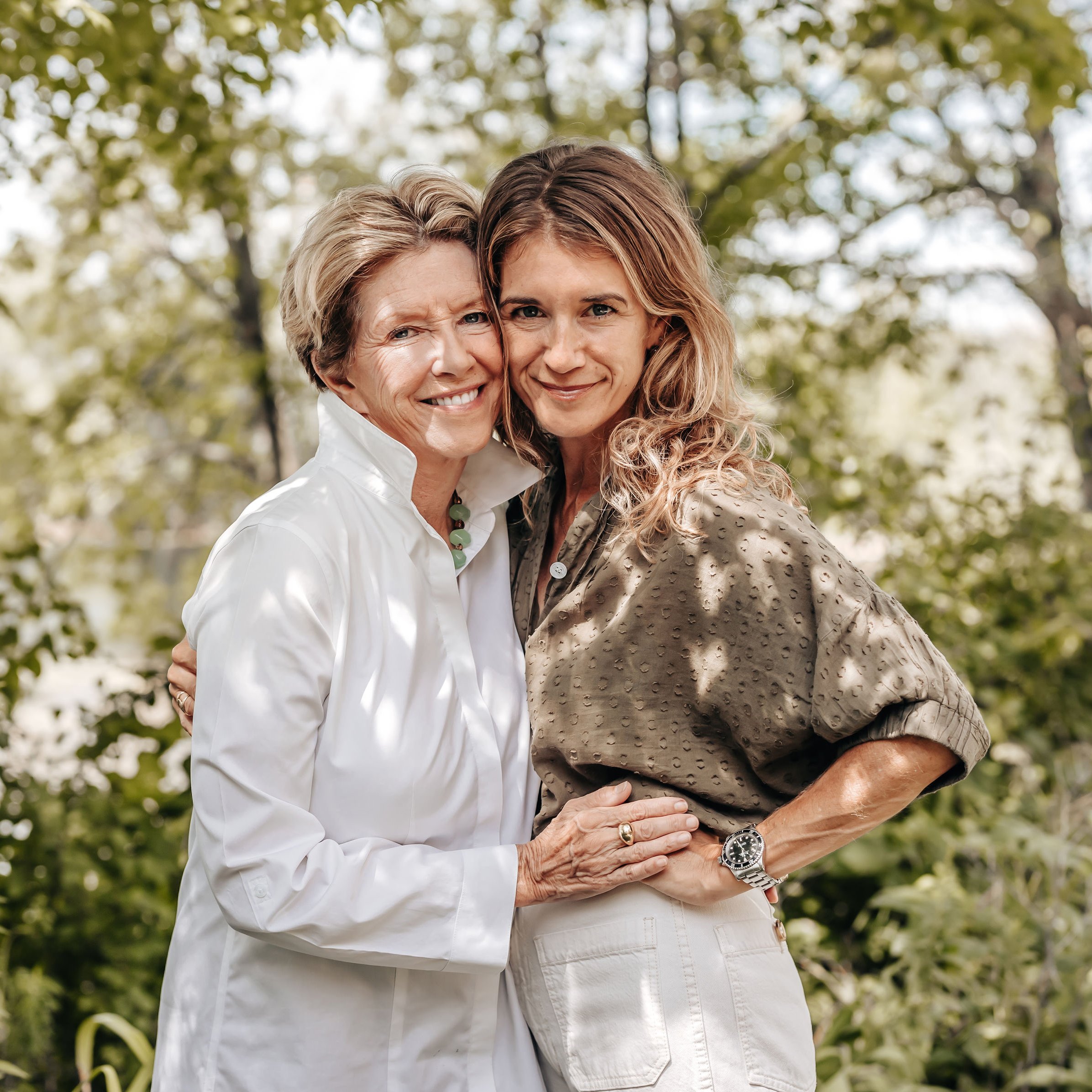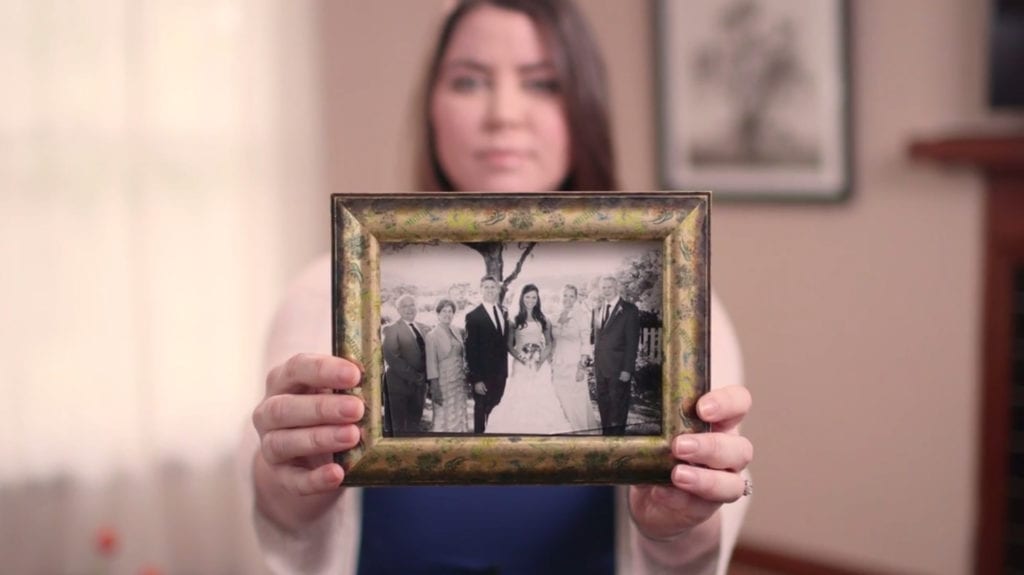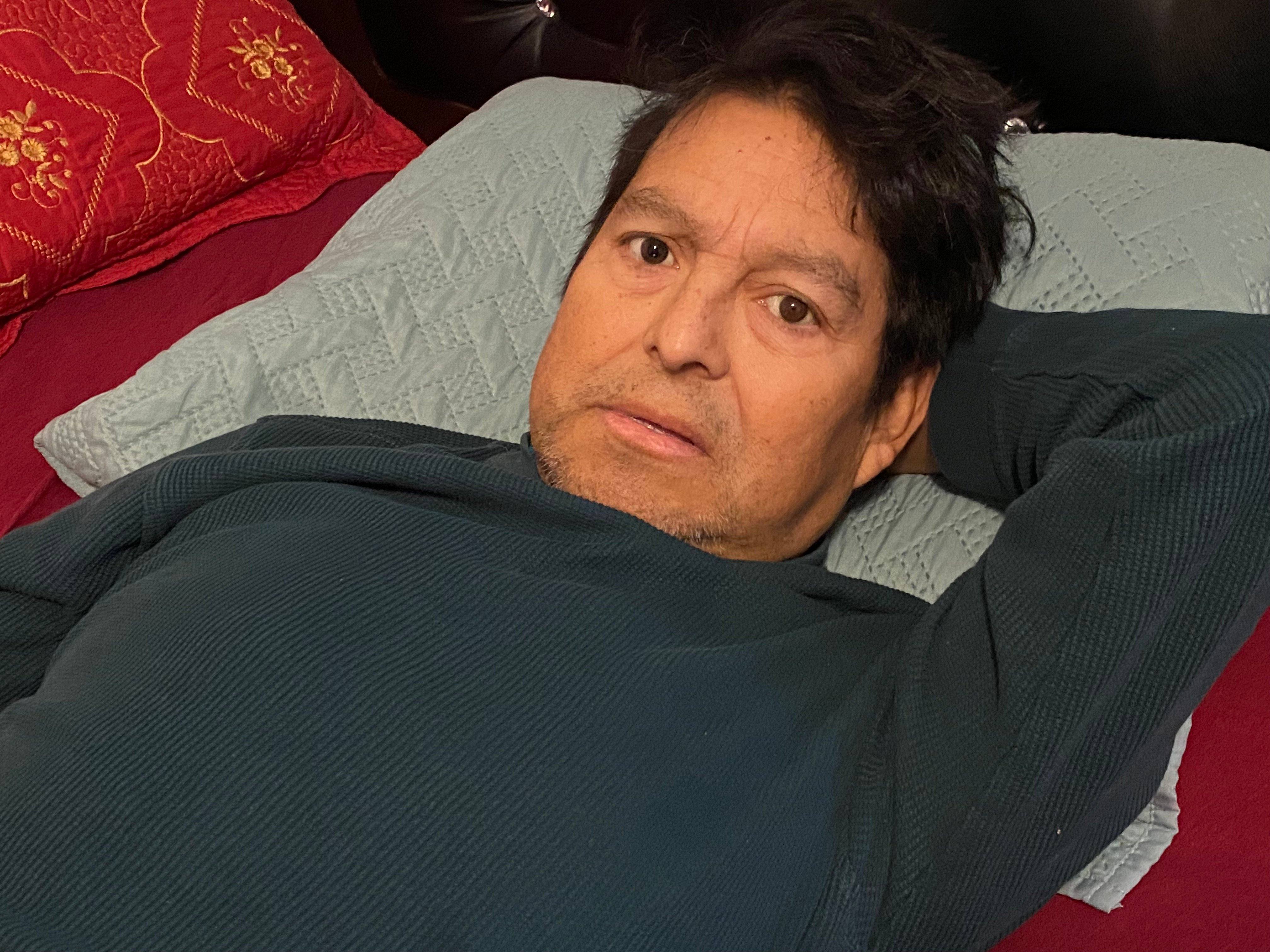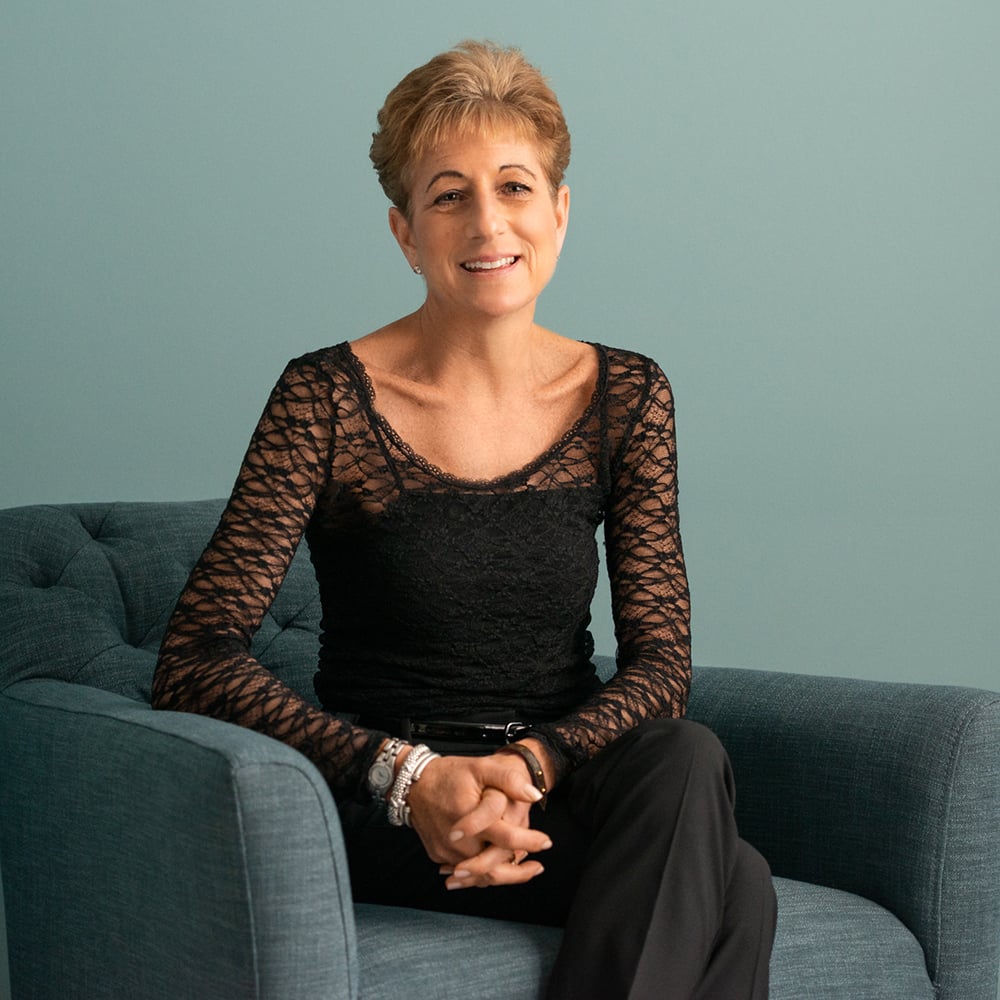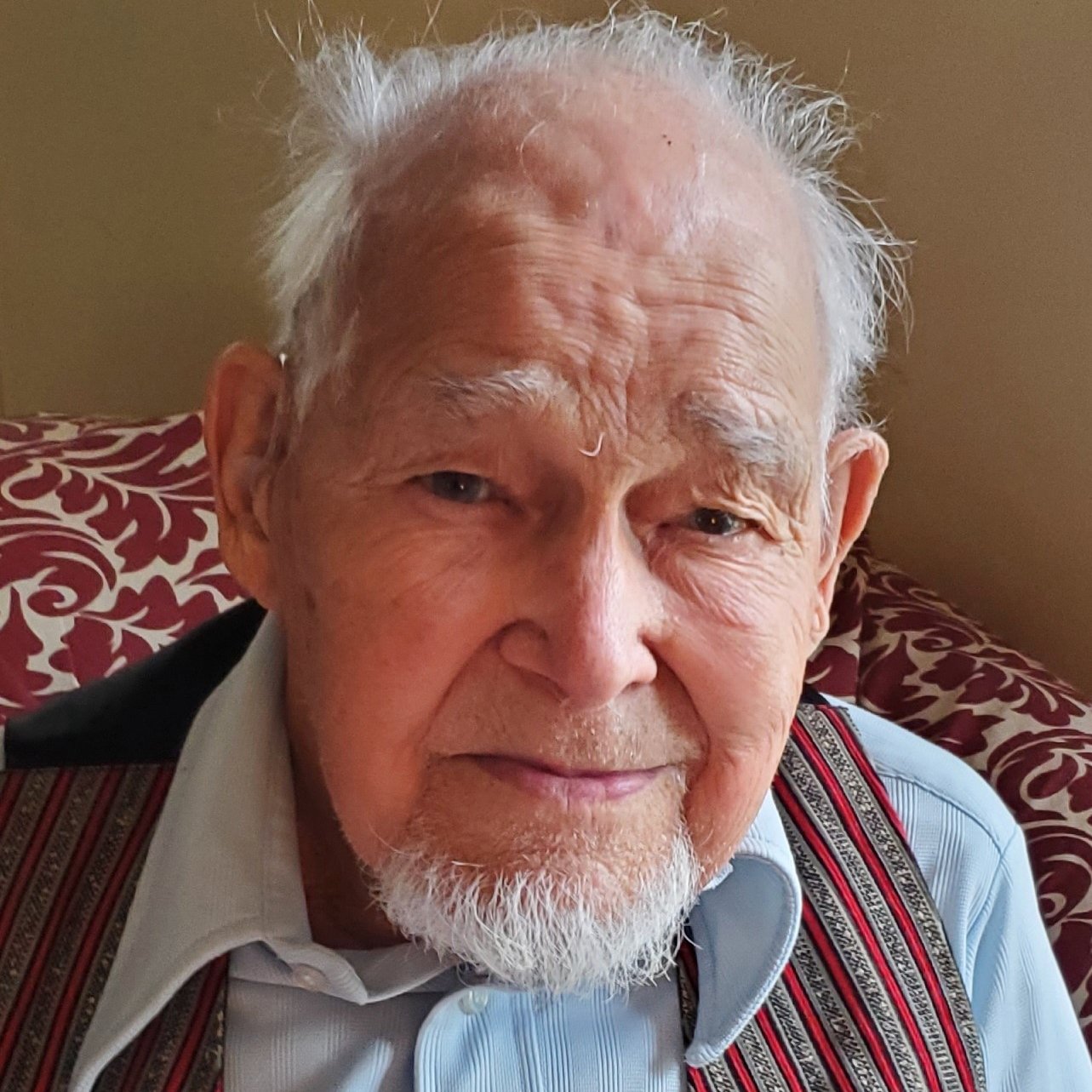Cheryl's husband, author David McNally, has written about her diagnosis and decision to VSED, and his role as her caregiver in the PBS website Next Avenue. Read his essays from August 2021 and from January 2023.
Cheryl and Wendy shared their story with Compassion & Choices in April of 2022. The following conversation has been edited for length and clarity.
Compassion & Choices (C&C): How long have you lived in Minnesota?
Wendy Brown: My parents moved to Minneapolis from New York City in 1974, shortly after I was born. Aside from living abroad and going to college in Madison [Wisconsin], I’ve lived in Minneapolis my whole life. I met my husband while running
around the city lakes! Soon into our marriage it became clear how important it was to plant our roots in the Twin Cities, both to grow a family in a city we love and also be close to our parents.
Cheryl Hauser: I moved here in my late 20s and fell in love with it. Minneapolis is phenomenal, with all of the contemporary arts, especially its theater scene. Now, with my Alzheimer’s, going to a theater is no longer workable for me; I can’t
track what’s happening. My parents were musicians, and music was a big part of my life for years: playing piano, singing, performing in my church’s bell choir.
Wendy: So that was probably one of the first real signs that you had Alzheimer’s. You were having a difficult time tracking the notes at the piano and in the bell choir.
Cheryl: I remember — I was a good pianist. But I went and sat at the piano, and I would look at the notes on the sheet music, and I wouldn’t know what to do with them. I couldn’t make sense of where they’d be on the keyboard.
Those things had brought me such joy, and that’s when I started to feel that something was seriously wrong.
Wendy: Another obvious shift was when Mom started getting confused about her calendar and what was coming up. In general, she was just becoming more disoriented and losing her phone constantly. Driving-wise, well, we tend to have heavy feet … .
Cheryl: Yeah, we’re pretty assertive drivers.
Wendy: Yeah, I wouldn’t say we’re the safest drivers. So, it wasn’t like, “Oh, Mom’s not stopping at a stop sign, something must be wrong,” because that was happening before, unfortunately [laughs]. But still, there were certain times it was scaring me when she was driving.
C&C: When did you first learn about voluntarily stopping eating and drinking (VSED)?
Cheryl: In 2016, my brother died of Alzheimer’s disease, so I knew what this disease could look like.
Wendy: You had a face-to-face experience with someone you knew well and loved deeply, and it was painful to see your brother look at himself in the mirror and not know who he was, getting scared of his own shadow. With him, there were signs for a
while. It was very difficult to watch, but looking back, it was also a gift that he gave to you.
Cheryl: Yes. Seeing his experience of moving around to multiple different skilled nursing facilities made me feel certain that I wanted to die at home. His death was also Wendy’s catalyst to become a death doula.
Wendy: In the summer of 2018, two years after my uncle died of Alzheimer’s, I gave Mom a book by Phyllis Shacter, Choosing to Die. When I read it, I was starting to consider becoming a death doula. I took a course called Speaking of Dying, and
it opened my eyes to the choices people have at the end of life that they so often don’t hear about. By that point, I had a feeling that Mom had the disease because of some of the things we mentioned. When I handed her Phyllis’ book,
I said, “Hey, Mom, there’s no pressure, but you might be interested in reading this.”
Cheryl: I read it, and I knew right away, “If I do have Alzheimer’s, this is how I would want my life to end.” I don’t want to endure the final stage of this disease. My brother had a very rough last few years of his life. He was scared. And I don’t want to have to live like that. I want to have dignity in my final years of life. As far as my death is concerned, I feel strongly that I want to be held, I want to be sung to, and I want all the care hospice can provide. I want to be participatory in my end-of-life process. I get to choose how I’m going to die.
C&C: What are some of the challenges you’re facing right now as a result of your Alzheimer’s?
Cheryl: After the diagnosis in June 2019, I noticed that I couldn’t spell. When I tried to read a book or follow a written hymn, I couldn’t track the words. Even listening to a book on tape became frustrating. I love movies, but even that
became challenging, as I could not keep up with the plot. As things progressed, I could do less and less and less. A few weeks ago, we were going to have a few friends over for dinner. I went to the dining room to get the silverware, and I was
looking, and I couldn’t make sense of what I was looking at. I couldn’t figure out where the forks should go, and I didn’t know where the napkins should go. I called [my husband] David, and he came up, and I cried, and he cried.
Wendy: You’re okay to be alone at home for small periods of time, maybe around two hours now.
Cheryl: At the most. I might know that David is doing errands, but when I’m not sure when he’s going to come home, I panic. So I just walk around the house, and I don’t know what to do with myself. He’s always calling me and making sure I’m okay. So I feel safe. But if I’m not around him — for instance, recently we traveled to Australia, where David’s from, and I went to the bathroom in the airplane. I went in and then I suddenly didn’t know where I was, and I didn’t know where the levers were, so I had to pound and pound on the bathroom door to get out.
This is a really poignant time for me in that, because I can’t do these things, I feel inadequate, I feel stupid, I feel frustrated. And then I just cry and cry. I’m a big crier.
Wendy: You cry happy; you cry sad. You’ve always been a big crier.
Cheryl: But it’s just more extreme now.
Wendy: I’d say in the past year, you’ve gone through these days or weeks where your energy and positivity is a little higher and you’re able to laugh it off. But then there are other times, like the past week, where those moments
really trigger feelings of incompetence and the question of how much longer you can do this.
Cheryl: I will say to Wendy, “I don’t know how much more I can do.” I’m not at all scared. I’m not at all fearful of dying. But I just feel more and more that I’m done.
Wendy: It’s exhausting to always feel like that.
C&C: How have you adapted to these challenges?
Cheryl: I have this unbelievable husband and children that are so supportive. David is just my rock. I have a son and two daughters, and I talk to my kids every day. My family, my granddaughters know all about this. They call me Nonni. They come in
and just hold me, rub my neck, comb my hair.
I’m doing a lot that is comforting for myself.
Wendy: You also watch a lot of movies. She watched Heartburn, with Meryl Streep, maybe three times in one week. And yesterday when you were home, I came over and you were still in your pajamas, and you had watched eight one-hour episodes of a TV series
you love.
Cheryl: Part of my mantra from the beginning has been I would not do anything that did not bring me joy.
Wendy: So if watching TV all day long brings you joy, you’re going to do that.
Cheryl: I’ve gone back to my love painting, and I do a lot of it. I use acrylics. I end up putting on music and dancing in the living room, and then if I’m feeling negative energy, I’ll just throw some darker colors on the canvas. The plan is that after my service of celebration, there’ll be a reception and my paintings will be up for sale to anyone who wants to buy one. Then the proceeds can go to a good cause. And maybe also toward the wine that will be served at the celebration.
C&C: At this point, what is your line in the sand for deciding when it’s time to start the VSED process? How do you think you’ll know that it’s time?
Cheryl: People always ask, “How will you know?” And my response is always the same. I say, “My daughters will know; my husband will know.” It’s what Wendy has said — it’s when nothing else matters. Then let’s
start this process.
Wendy: When Mom’s love for spending time with people, being outdoors and traveling begins to weaken, and when she is more confused than not, this will be a clear sign that VSED is near. When she gets to that point of not wanting to travel, when she starts saying, “No, I don’t think I want to go up north that weekend,” or she starts canceling walks with friends, we’ll notice this is not the Cheryl we’ve known. When she wants to stay at home, cares about little and her world begins to become smaller, this will determine that VSED is on the horizon.
Cheryl: Yes, that is all happening more and more.
Wendy: Mom likes to have more downtime at home these days.
Cheryl: Which is really not my personality. I used to go out all the time.
I sort of base it on holidays. If I want one more Christmas with my children or one more birthday with one of the granddaughters, I can get to that point.
Wendy: Mom has also recorded statements about VSED. First via video and then also in document form, with these bullet points of “I’ll be closer to VSED when I can’t …” At first it was, “When I can’t work
the dishwasher or the microwave or can’t dress myself.” But she can’t do those things now, and so we’ve tweaked that list over time.
Cheryl: David loves to come help me get dressed. Particularly putting on my bra.
Wendy: There’s a five-sentence paragraph with her statement about why she’s deciding to VSED because of this disease. We’ve also made sure her POLST [physician orders for life-sustaining treatment] and healthcare directive via Five Wishes, with verbiage specifically addressing VSED, are set and ready to go.
C&C: What sort of support have you planned for the VSED process?
Wendy: Three months after Mom was diagnosed, we met with her doctor who she’d been seeing for a while. The primary reason we met with her was to discuss VSED. When we told her Mom was considering VSED, she replied, “This is not easy. Are
you sure this is what you want?” But because she knows you so well, she didn’t question you after you made it clear that this is what you wanted. You’d been thinking about this for over a year. So not long after that, she referred
us to hospice. They came over to Mom’s house and had an hour-long conversation about what to expect and the help they can provide from day 1 of VSED.
We’ll also have Mom make a recorded statement closer to when she starts VSED so that she can hear herself state why she’s decided to voluntarily stop eating and drinking, in case we start the process and she does ask for water and food, and we have to remind her why you’re doing this. That said, after she begins the VSED process we will honor her decision if you simply decide not to continue for whatever reason.
Cheryl: The important thing is that I’m so open to speaking in some recorded fashion, that this is my plan, etc. And then also for you and David to be able to come up to me and remind me, “This is what you decided to do, but you can stop
at any time you want to.” Because I feel so committed, and I’m not afraid, and I know I’m going to be fine.
Wendy: I’ve seen how important it is to her to die at home, but she also wants her husband and children to be able to be in those roles of husband and children rather than caregivers. So we’ve set aside a budget to have 24/7 nurse care in addition to hospice.
Cheryl: Something that makes me so happy is that Wendy is a death doula, and my other daughter, Sarah, is a birth doula. So I have these daughters bookending life. Birthing and dying. I’m so proud of them.
Wendy: There are still things we need to create or write, especially for the eulogy. Yet right now we’re striking that delicate balance of not wanting to discuss or think about death every day but still aware that the time we have with Mom is
shortening. She wants to be able to live her life. She needs to just be in the moment.
Cheryl: What’s most important is we want to educate people. It’s not just my story. I want there to be a legacy to what I’m doing.


